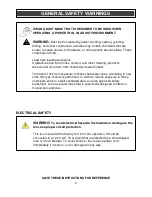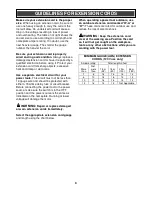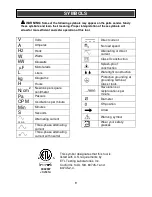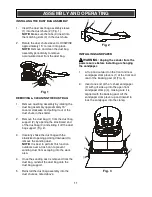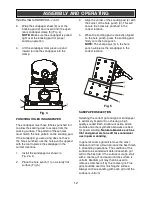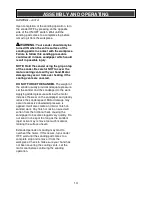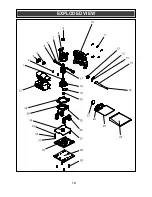
12
INSTALLING SANDPAPER – cont’d
3. Wrap the sandpaper sheet (3) over the
backing pad (2) and insert it into the open
rear sandpaper clamp (5) (Fig. 4).
NOTE: Make sure the sandpaper is pulled
tight over the backing pad for proper
sanding operation.
4. Lift the sandpaper clamp lever up and
inward to lock the sandpaper into the
clamp.
PUNCHING HOLES IN SANDPAPER
The sandpaper must have 8 holes punched in it
to allow the sanding dust to escape from the
working surface. The pattern of these holes
must match the hole pattern on the sanding pad.
If the sandpaper you are using does not have
the holes punched, use the hole punch supplied
with the tool to pierce the sandpaper in the
correct locations.
1. Install the sandpaper as shown in
Fig. 3 & 4.
2. Place the hole punch (1) on a sturdy flat
surface (Fig. 5).
3. Align the corner of the sanding pad (2) with
the corner of the hole punch (3). This will
ensure the holes are punched in the
correct location.
4. When the sanding pad is correctly aligned
on the hole punch, press the sanding pad
firmly onto the hole punch.
NOTE: The sharp pegs (4) in the hole
punch will pierce the sandpaper in the
correct location.
SANDPAPER SELECTION
Selecting the correct grit and type of sandpaper
is extremely important in achieving a high
quality sanded finish. Aluminum oxide, silicon
carbide and other synthetic abrasives are best
for power sanding. Natural abrasives such as
flint and garnet are too soft for economical
use in power sanding.
In general, coarse grit will remove the most
material and finer grit will produce the best finish
in all sanding operations. The condition of the
surface to be sanded will determine which grit
will do the best job. If the surface is rough, start
with a coarse grit and sand until the surface is
uniform. Medium grit may then be used to
remove scratches left by the coarser grit. Fine
grit should be used for finishing the surface.
Always continue sanding with each grit until the
surface is uniform.
ASSEMBLY AND OPERATING
Fig. 4
Fig. 5
Summary of Contents for 241-9946
Page 16: ...EXPLODED VIEW 16...




